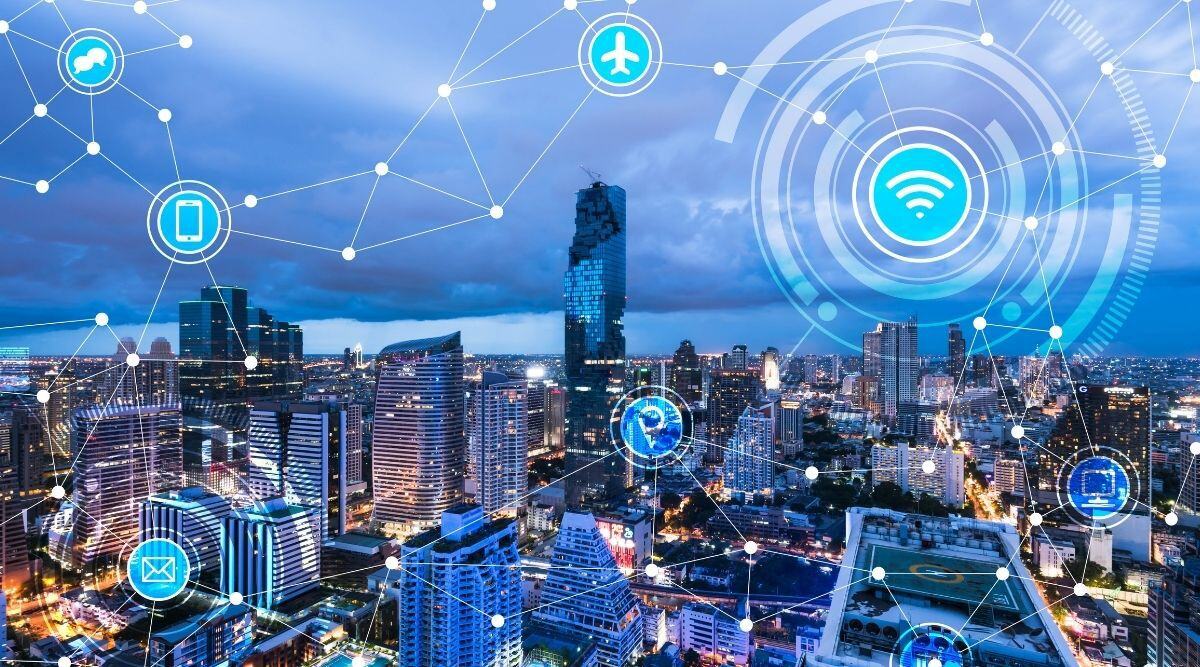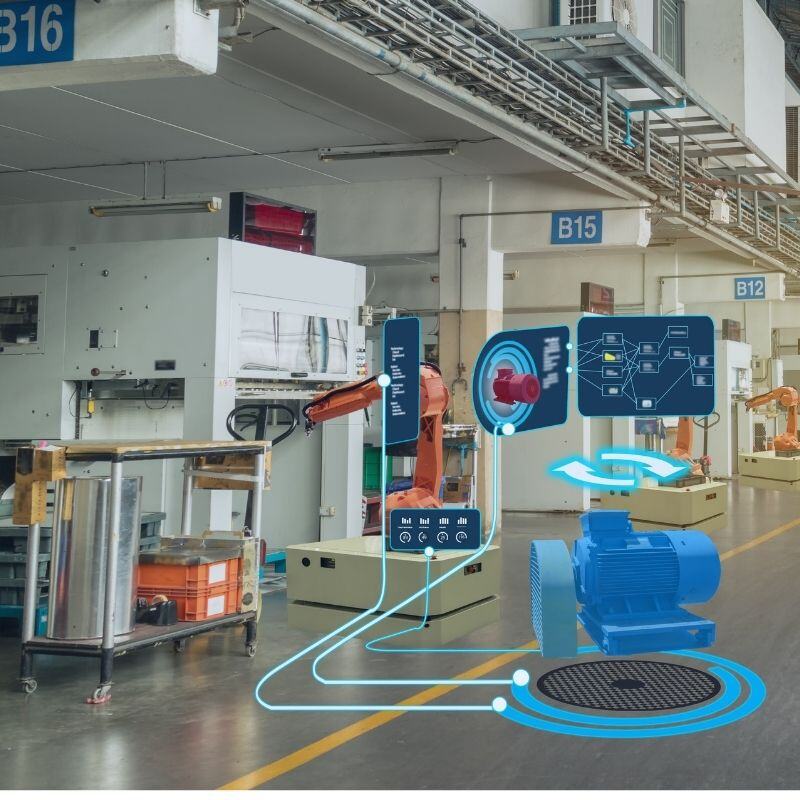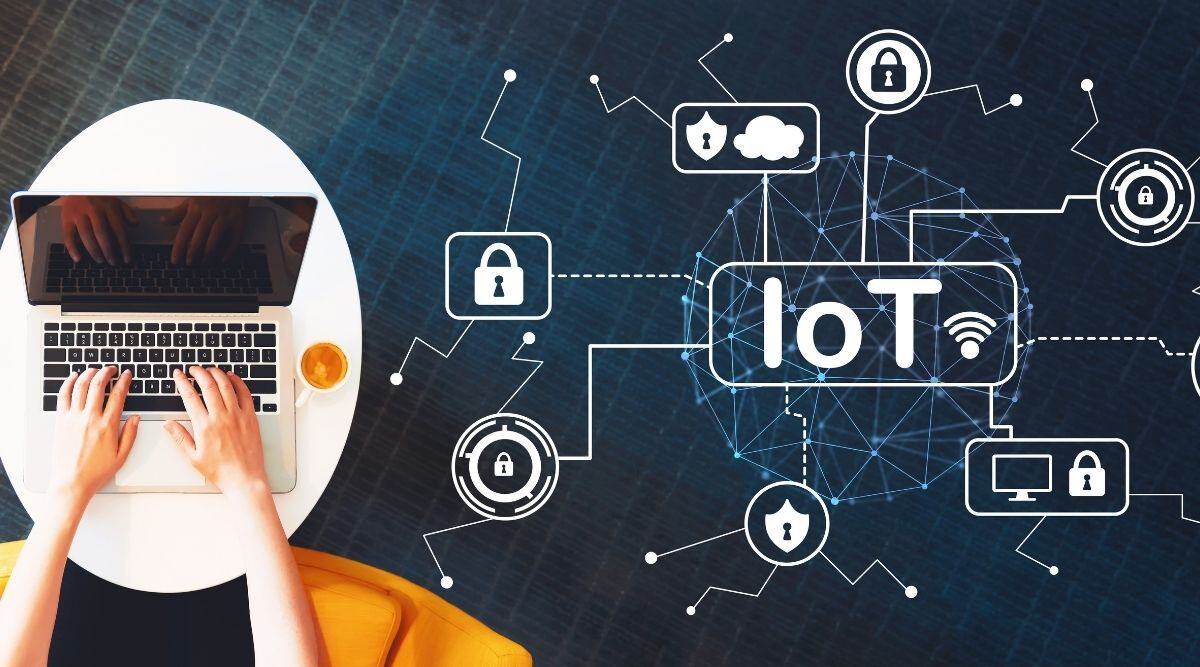What is the Internet of Things?
According to the Internet of Things Agenda, IoT is a system of interconnected ‘things’ that are given unique identifiers and communicate over a network without human-to-human or human-to-computer interaction.
These things can be a wide variety of devices, including smartwatches, smart TVs, machinery, and vehicles. Their communication is made possible through the advent of small yet powerful microcomputers and sensors embedded within each device.
History of IoT
The idea for a network of devices other than computers goes as far back as 1982 in Carnegie Mellon University. A modified soda vending machine was outfitted with sensors and connected to the then ARPANET—a predecessor to the modern internet. The machine was able to give data on its remaining inventory and the current temperature, among other things.
The concept received lukewarm attention during the late 80s and throughout the 90s. It only saw renewed interest in the early 2000s as the internet grew in scope and new devices became available to consumers.
Kevin Ashton, a pioneer in RFID research, envisioned a future where devices could communicate with people and other devices using RFID.
Fast forward to today, computing has been more ubiquitous than ever. Newer devices can connect to the internet while seamlessly integrating into our lives.
These days, things like portable health trackers, robot vacuum cleaners, and even air fryers are beginning to be outfitted with wifi capabilities to improve our lives.

How is the Internet of Things used in business?
Consumer electronics aren’t the only things that benefit from this hyperconnectivity. Many industries have seen the effects of the innovation brought about by the Internet of Things. One of which is in the business sector, where data and information play a major role.
Boost customer and business understanding One of the immediate impacts of IoT in business is an increase in customer insight. Businesses now have an accurate understanding of how customers interact with their products firsthand.
This allows businesses to gain accurate insight on how exactly their products are performing and show exact pain points that might not be apparent if taken through traditional means.
Online stores, for example, use data from their apps to see which items people are viewing and adding to their carts. This lets the online stores predict which products to increase stocks in anticipation of this demand.
Better resource tracking and management Making things communicate opens up new ways of dealing with existing problems. One problem is accurate resource management. IoT-enabled devices let you see where resources are routed and used.
This visibility highlights possible weaknesses in the supply chain. This information, in turn, gives you tools to address problems and improve efficiency.

Opens up new innovative ways to do business Remote work is on the rise, as access to internet-enabled devices and reliable infrastructure is much more ubiquitous. This gives companies a new and more flexible way to run their operations.
A fully or mostly remote work operation can provide companies with huge savings as the cost for the upkeep of an on-site office is largely eliminated. The money saved can then be channeled to other important parts of the business like R&D or employee benefits.
How the industrial Internet of Things is changing the manufacturing industry Manufacturing and production is another industry that can greatly benefit from IoT. The production cycle relies heavily on the effective and efficient management of resources. Something the IoT excels greatly.
Reduce production time and improve efficiency Production cycles are the heart of any manufacturing operation. Any inefficiencies can greatly affect performance and may cascade into other serious problems if left addressed.
IoT data lets manufacturers get the full picture of their entire operation. IoT-enabled machinery, for example, can give their status on-the-fly.
This way, operators can see which machines are performing in top condition and which aren’t. When done with other preventative and monitoring measures, this helps pinpoint bottlenecks and other hiccups. The result is a more optimized and streamlined operation.
Cost reduction The efficiency brings in yet another welcome result: eliminating unnecessary costs.
Complex manufacturing processes can have hidden cost sinkholes that the manufacturers might not know about. These can be as little as unnecessarily redundant features, efficient routing, or obsolete practices.
Having a bird’s eye view of the entire operation lets you eliminate these problems and minimize expenditures.
Improved personnel safety and security Modern manufacturing practices put a great emphasis not only on efficiency but also on safety and security. This is true for both personnel as well as the equipment used.
Traditionally, this is entirely done through manual inspections made by trained professionals. This did drastically improve conditions; however, some things still get through the cracks once in a while.
Having a real-time status report on every machine and device lets you see potential problems long before they happen. This works well in tandem with in-person inspections.
How does the Internet of Things affect banking?
Security is perhaps the most critical aspect of online banking. The convenience of banking online also comes with risks not only to your assets but also to your information. This is where IoT comes into play.

Better fraud detection Advancements in technology make online banking more secure these days. For example, mobile phones equipped with biometric sensors help secure transactions.
The portability and connectivity of mobile phones make them good access points. Their connectivity also allows you to receive real-time notifications when transactions are made.
This gives you enough time to quickly flag any suspicious or fraudulent transactions done through your accounts.
Boost data security With the advent of modern security devices, banks are equipped to address security effectively. CCTV cameras, motion sensors, smart alarms, and other devices are great on their own.
But by connecting these via a network, these devices create a robust security infrastructure with real-time threat detection. This lets banks be always on top of every situation whenever it arises.
Better data analytics Having multiple data gathering points through many connected IoT devices also gives the banking sector more useful data. Data that would have been difficult to obtain reliably and effectively through traditional means.
This gives banks and regular consumers enough useful information to make informed decisions on their purchases.
More convenient services for more people Banking on a wide variety of devices makes banking as convenient as ever. These days, ordinary consumers can use smart wearable devices as a replacement for their credit cards for transactions.
Some establishments are also starting to use wearables for things like self-checkouts and transaction authentication without the need for human intervention. This makes for smoother and a lot faster transactions.
How the Internet of Things is revolutionizing healthcare
Healthcare is another sector that relies on efficient, adaptable, and up-to-date processes. IoT has revolutionized how healthcare services drastically improve overall efficiency and client experience.
Increase efficiency and reduce errors When dealing with lives, one tiny error can prove fatal. That is why healthcare professionals must get accurate and on-time information on their patients.
Having IoT-connected medical devices makes this a reality. Today, doctors and other healthcare professionals can give timely and appropriate treatment thanks to IoT.
Overall improvement in patient care Because of improved efficiency in giving quality healthcare, wait times are drastically shorter. Now, patients can get timely results from tests that would have taken longer just a few years ago.
This ensures that patients get treated as soon as possible. This also reduces the anxiety that patients feel when waiting and makes the whole ordeal less stressful.
Better disease management and care An updated and complete health record helps healthcare professionals provide quality service to their patients. Collecting these data were traditionally done through manual collection.
Having IoT medical devices minimizes error by letting the devices transmit these data themselves. This simplifies the system, and there makes disease management easier and more effective.
Substantially lower costs This simplification of the system ultimately leads to reduced costs. As unnecessary processes are removed, resources can then be diverted to where they are needed the most.
This means some procedures can become more affordable as a result. This benefits the consumers as quality healthcare is within reach.
How the Internet of Things is improving transportation and logistics
Efficiency is the name of the game for the transportation and logistics sector. Much like the manufacturing industry, logistics thrive through efficient and effective processes and their management. These days, IoT also plays a huge role in making the transport of goods more reliable and cost-effective.

A detailed look at the supply chain As in manufacturing, having a detailed and complete view of your entire supply chain is crucial. One minor problem can cascade, leading to bigger problems if not addressed early.
IoT lets you do this in real-time as devices reliably communicate their status precisely. This gives you a complete on-the-ground look at your whole operation.
Improved fleet tracking and management Sensors on the trucks can give valuable information vital to the management of fleets. This can include average speeds, driver behavior, vehicle condition and performance.
Having this data can give data that has a direct effect on the delivery of goods. Using these data, companies can also implement measures that address problems that may arise.
Simplified and automatic inventory tracking Being on top of your product inventory is also crucial in logistics. Companies should know how much are in stock and where exactly these stocks are.
Multiple sensors and tracking methods help these companies do just that. Technologies like RFID are beginning to shape the future of inventory tracking.
Vehicle-to-vehicle communication Vehicles “talking” to each other is perhaps the next biggest leap in innovation in the transportation and logistics industry.
These vehicles can send data in real-time with others which lets drivers react in real-time. This helps in avoiding congestion, quick rerouting, and making deliveries smoother. This reduces response times and makes on-the-fly changes a breeze.
How can the Internet of Things help your career?
There is no doubt that IoT is here to stay. That is why having a good grasp of it can open opportunities for growth in the future. As with any emerging technology, early adopters get a huge leg up, making you a valuable asset.
Since it is a relative newcomer, being one of the first professionals to have in-depth knowledge in the field can be a big advantage. Companies that are looking to leverage the power of IoT are always on the lookout for skilled and talented people to help them achieve this goal. Positioning yourself as this talent is a huge boost.
IoT is becoming more and more ubiquitous these days and will continue to do so. It is also present in a wide variety of fields and industries. This gives any professionals skilled in IoT access to a bigger list of career paths. The skills are also easily transferable, making you as a professional highly adaptable.
The hyperconnectivity that IoT offers is bound to transform how business is done. Being at the forefront of this change allows you to position yourself advantageously. This means lots of opportunities are available to you this early on.

There is no doubt that IoT is here to stay. That is why having a good grasp of it can open opportunities for growth in the future. As with any emerging technology, early adopters get a huge leg up, making you a valuable asset.
Since it is a relative newcomer, being one of the first professionals to have in-depth knowledge in the field can be a big advantage.
Companies that are looking to leverage the power of IoT are always on the lookout for skilled and talented people to help them achieve this goal. Positioning yourself as this talent is a huge boost.
IoT is becoming more and more ubiquitous these days and will continue to do so. It is also present in a wide variety of fields and industries. This gives any professionals skilled in IoT access to a bigger list of career paths. The skills are also easily transferable, making you as a professional highly adaptable.
The hyperconnectivity that IoT offers is bound to transform how business is done. Being at the forefront of this change allows you to position yourself advantageously. This means lots of opportunities are available to you this early on.
How to learn about the Internet of Things
As a highly technical emerging field, becoming an expert in IoT needs quality learning resources. Traditional universities are great—and familiar—ways to learn and get the necessary skills to excel in this field. Fortunately, thanks to IoT learning, it is also made abundantly accessible and convenient.
These days, those interested to learn can enroll fully in online courses from online universities. The classes are flexible and easily accessed through computers and other mobile devices. This gives you the power to learn things anytime, anywhere, and at any pace.
If you are new to the IoT and want a complete rundown of it, courses like Nexford’s Internet of Things online course are an excellent place to start. These jumpstart courses give you a complete understanding of the field as well as equip you with the necessary skills. These skills will help you stand out to potential employers looking for talents in IoT.
If you are a professional in the business sector looking to specialize in IoT, programs like Nexford’s MS in Digital Transformation are a great resource. These programs will equip you with the right skills in cybersecurity and product management with the Internet of Things as its center. These are perfect for individuals looking to pivot towards a career in IoT.
Conclusion
IoT is the result of innovation and progress over years of development. It is already drastically changing how we do things, and it is here to stay. Having a good grasp of this new and exciting paradigm will certainly position you for a fruitful and fulfilling career in the future.
Subscribe to our newsletter
Don't miss out on our latest updates.
Unlock Your Potential: Explore Our Programs
Invest in yourself and your future. Discover our range of degrees, courses, and certificates to achieve your goal







